|
Aladdin Model C Brazil ( ) There's more to it than first meets the eye
M. Agostini Comercio-Industria S.A. Rio De Janeiro 1960-2001?
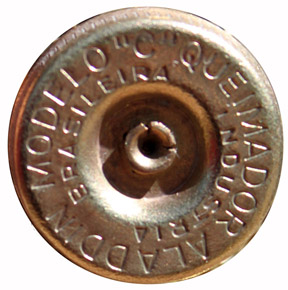
Brass Model C Brazil from Nashville model C tooling
"MODELO "C" QUEIMADOR ALADDIN"
"INDUSTRIA BRASILEIRA"
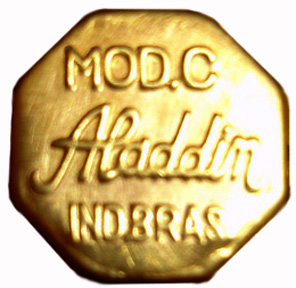
Brass model C Brazil
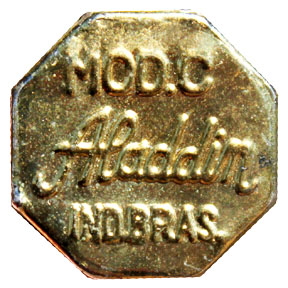
Steel model C Brazil
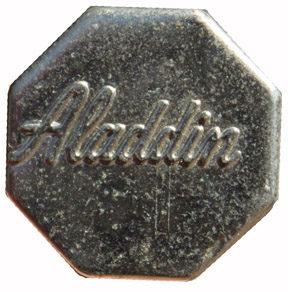
Steel model C Brazil reworked in the UK
|
Most collectors believe that the Aladdin model B burner represented the best Aladdin made and end their collections at the end of model B production. But I submit that the model C series along with the model 21 burners are a lot more interesting than they look at first glance and are worthy of a deeper look.
True when the flood destroyed the Aladdin model B tooling and a new cost reduced burner needed to be hastily designed and tooled up the resulting Model C Nashville burner may have been harder to use and may have had more problems than was common with the model B burner. The model C Brazil burner was an attempt to improve upon the Nashville model C that somehow got cost reduced by being made from steel.
There is a lot more to the Aladdin model C lamp than first meets the eye. At first glance there are a series of lamps using the steel model C Brazil burner. This is the version that was imported to and sold in the United States. It has a reputation as being a poor burning lamp.
At second glance the final production run of the Brazil steel model C burners were shipped to Aladdin England to be reworked in an effort to make them burn more reliably. These received a wick adjustment knob simply labeled "Aladdin" without and model number or country label. The reworked burners were exported to the Americas. Some were sold into North America. It was a way to hide the fact that these were the Brazil model C burners that had already earned a bad reputation.
At third glance, there is a Nashville model C burner with Brazil model C markings on the wick riser. Nowhere on the burner does it say made in U.S.A. These appear to have been sold into South America only.
At fourth glance there is a Brass model C Brazil burner mounted on a polished brass table font that is very similar to a UK model 23 brass table font. These seem to be sold into South America only.
The steel burner earned the Brazil model C a poor reputation. Though this may be more of a word of mouth reputation than an actual burning experience reputation. But what about the others?
The round knob Aladdin model C Brazil burners were made from the Nashville model C tooling. The marking on the knob reads "Industria Brasileira" indicating it was made in Brazil. This burner is common in South America. Aladdin USA often manufactured burners destined for other Aladdin regions labeled made in the county the finished lamp was going to be sold in. These burner country labels were to signify where the entire lamp was assembled and the regional office they were sold from, not where the burner itself was manufactured.
The brass Model C Brazil burner appears to have been made with the same tooling as the steel Model C Brazil lamp. So far I have only seen this lamp mounted onto a brass table lamp. It seems fairly rare and apparently was only sold into South America. Is it possible that the Model C Brazil lamp was designed to be a brass lamp and then was later cost reduced by making them out of steel instead of brass? It would explain why the steel burners have such a poor burning reputation. Airflow through a burner is critical for proper burning. Brass and steel have different thermal expansion rates. Airflow designed for a brass burner would be slightly different in a hot steel burner because the openings for airflow would have slightly different diensions in a hot burner.
The steel Aladdin model C Brazil is commonly found on lamps in South America and were sold into North America in 1974 and 1975. They have a poor burning reputation and many burners have been replaced with brass Aladdin burners over the years. The steel burners were normally plated a silver colour to go on the aluminum and glass lamps, but some were plated in a brass colour for the 1974 amber short Lincoln drape lamps.
At the end of 1975 some steel model C Brazil burners were shipped to the UK to be reworked so that they would burn better. The reworked burners were given a new wick adjuster cover that just said "Aladdin". Some of these burners, mounted on aluminum Lamps were sold into North America. Some were mounted on English made fonts and sold into the South American sales region. I bought a hanging lamp that had this burner that had been hanging in a hardware store for over a decade and thought it interesting that these reworked burners came with English made wicks that were uncharred.
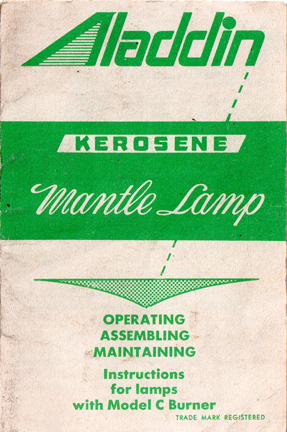
Click to download Aladdin model C Brazil instruction booklet
|
Aladdin Model C Brazil burners
Model C Brazil burner made with Model C Nashville tooling - Not sold into North America
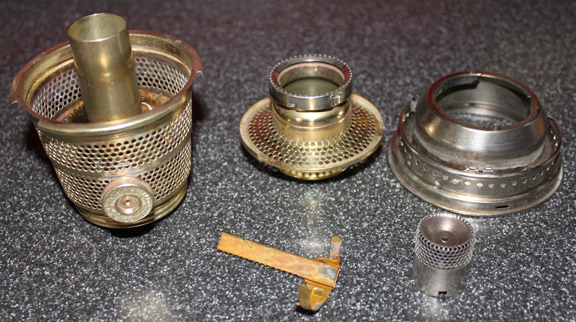
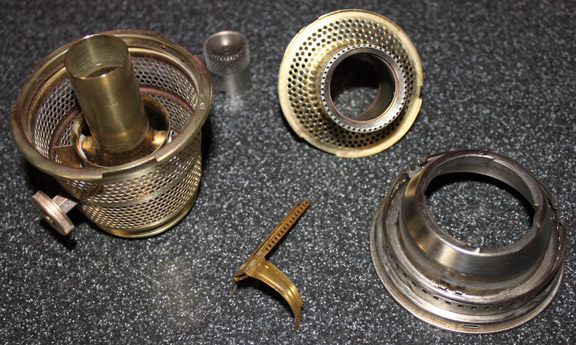
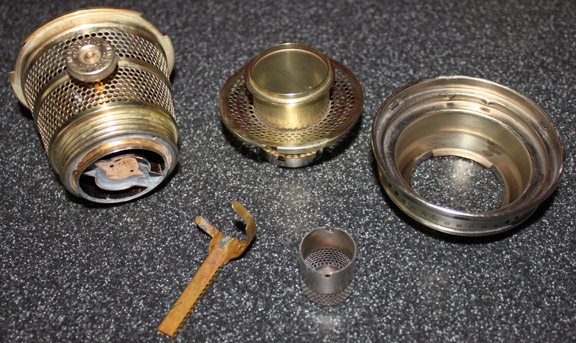
Brass Model C Brazil burner - Not sold into North America

A disassembled brass Brazil model C burner.
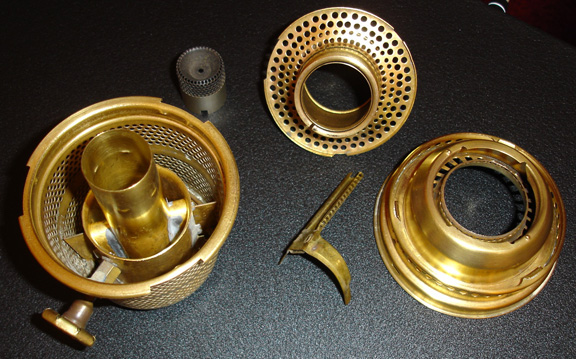
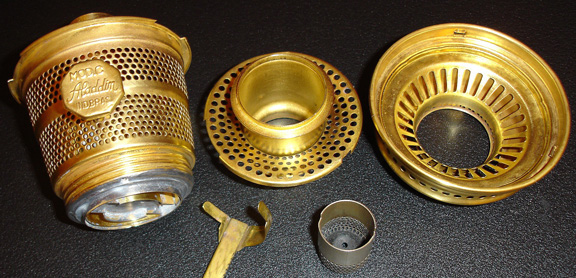
Steel Model C Brazil Burner - Sold into North America
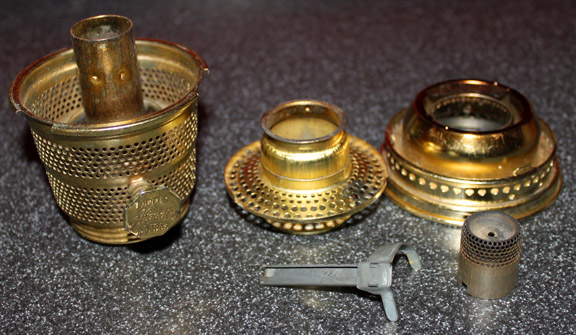
The steel model C Brazil burner commonly seen in North America. This one was plated a gold colour to go with the 1974 Amber model 23 Lincoln Drape table lamp.
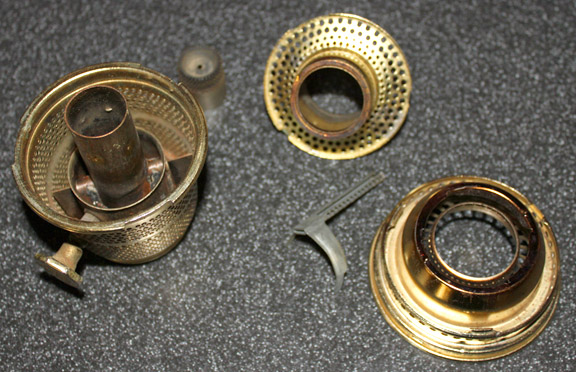
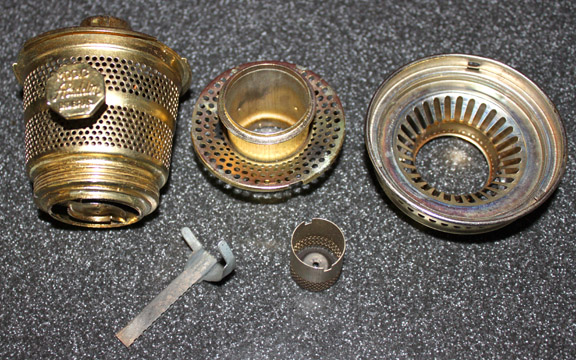
Steel Model C Brazil burner that was reworked in the UK - Sold into North America and South Africa on Aluminum lamps
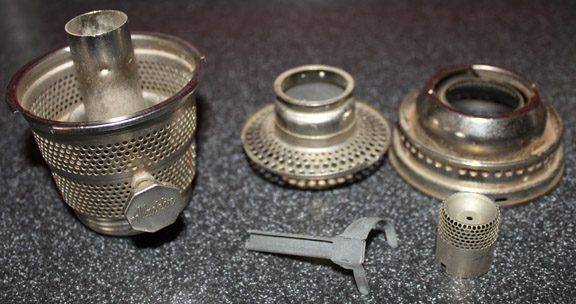
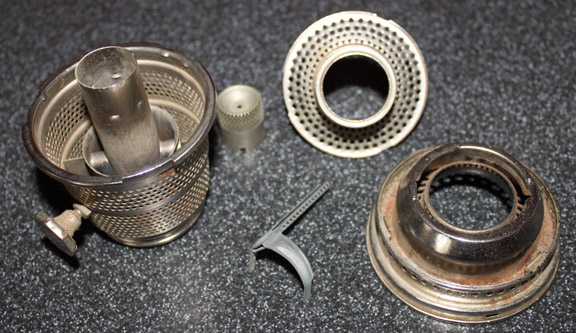
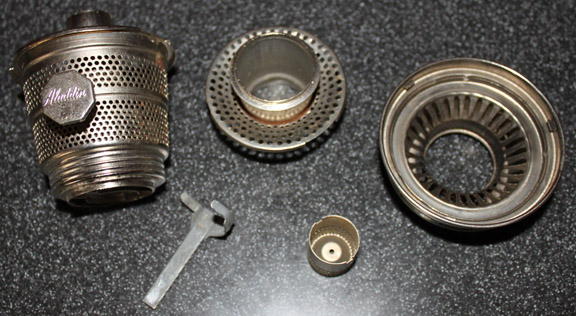
Most of these reworked burner were shipped to Aladdin Chicago then fitted to P&A manufactured aluminum founts to be offered for sale in North America. An unknown number of these reworked burners were fitted to English manufactured aluminum table founts then shipped to South Africa to be offered for sale within the South African Sales region.
Some comparisons of the Nashville style and Brazil variation of the model C:
Because the Nashville model C burner was sold as a Brazil model C burner and the Brazil model C burner is a modified Nashville model C burner, a comparison is provided to show the differences between the two.
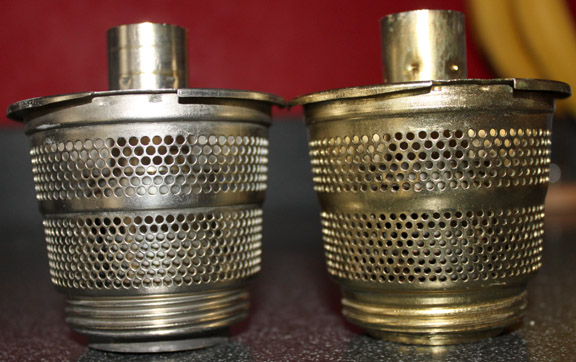
Aladdin Model C Nashville on the left, Aladdin model C Brazil on the right
The only differences between the burner basket sides that can be seen or measured are less angular bends st the centre stiffening band and at the base where it bends in for the threads. This is thought to be because the steel used on the model C Brazil burner required a larger radius bend.
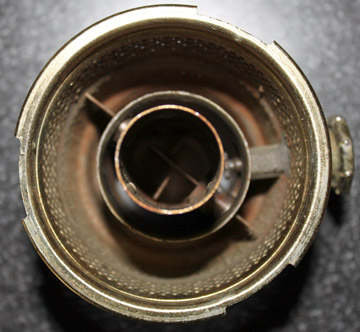
Model C Brazil burner base
All dimensions mic'ed to within 0.005" to the Nashville burner base. Construction if the burner base, inner wick tube and wick adjuster mechanism appear to be identical between the two burners.
|
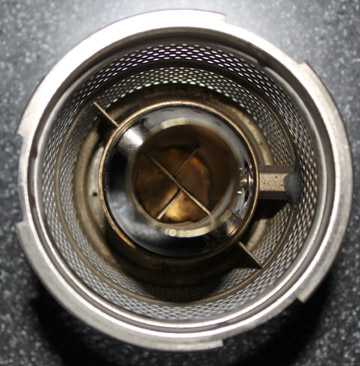
Model C Nashville burner base
|
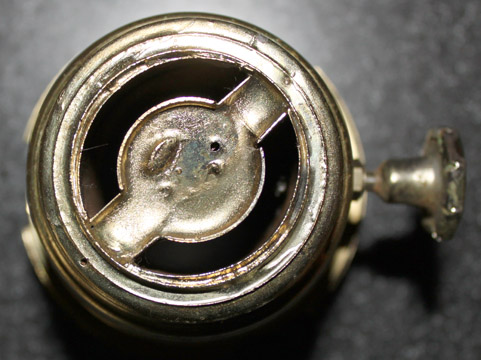
Aladdin model C Brazil burner base
The construction is the same as the Nashville burner except for the changes needed to fit the stronger hex shape adjuster knob. The drain holes on the outer basket rim are in different locations. The diameter of the inner wick tube on the Brazil burner is 0.025" larger in diameter otherwise the dimensions are virtually the same. The hex shape on the burner knob provides a better grip for adjusting the wick that was also incorporated during the model 21 production run.
|
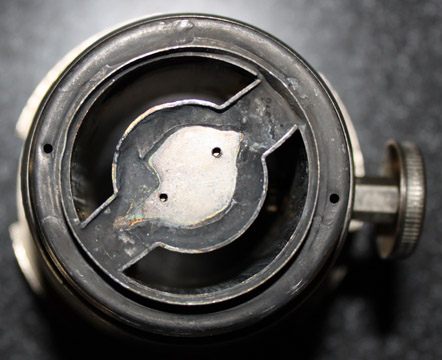
Aladdin model C Nashville burner base with its round wick adjuster knob.
|
NOTE: for the galley comparison I looked at the construction of model B, 21, 21C and 23 galleries to see how these galleries compare.

Aladdin model C Nashville gallery to left, Model C Brazil gallery on the right.
The three tabs that lock the chimney to the gallery are two piece on the Nashville burner. The chimney locking tabs on the model C Brazil gallery are single piece as are the locking tabs on model 12,B, 21, 21C and 23 galleries. The other difference visible from the side is the ring of hole around the gallery base is larger diameter on the Model C Brazil gallery.
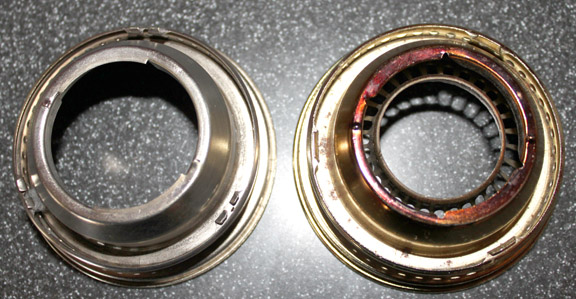
Aladdin model C Nashville gallery on left, model C Brazil gallery on right
Both model C galleries mounted the Lox-On mantle to the cone by locking the outside edge of the mantle frame. The outside edge locking method as used by the Model 12/ 14 Super Aladdin / model B gallery. Model 21 and later galleries used a different locking system for the mantle. The primary difference being that the orientation of the mantle to get it to drop down on the model C cone is less obvious and could make the mounting more difficult for the first time user.
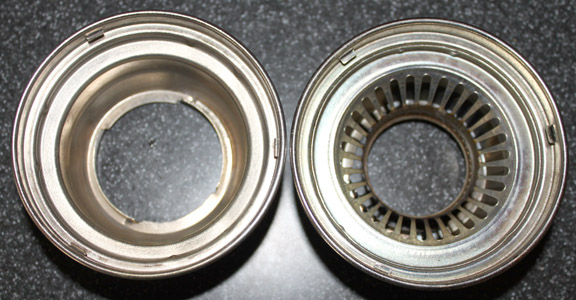
Aladdin Nashville Model C gallery on the left, Brazil model C gallery on the right.
Note the absence of an air baffle on the Nashville gallery and the presence of a baffle on the Brazil gallery
The Aladdin model 12 burner and Lox-On mantle moved the cone that directs air to the base of the mantle from the mantle frame (Kone-Kap mantle) to the gallery. The model 12 and model B gallery had in inner cone or baffle that directed an even flow of air along the inside surface of the mantle. The Nashville model C gallery moved the baffle from the underside of the gallery to the top of the outer wick tube, leaving it a little harder to light. The Brazil model C brought back the cone inner baffle to the underside of the one. The cone mounted inner baffle is used on all side draft Aladdin burners except for the Nashville model C. Adding the baffle to the Brazil model C gallery cone is considered in improvement over the Nashville model C burner.
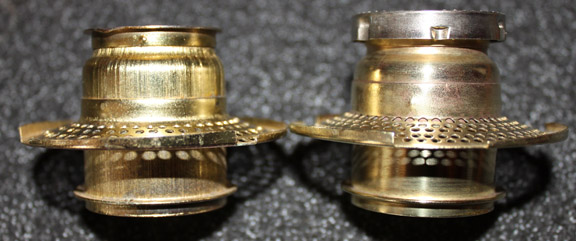
Aladdin Brazil model C outer wick tube on left, Nashville model C outer wick tube on right.
The outer wick tubes mic to be identical. The obvious big difference is that the Nashville model C outer wick tube as an air baffle crimped to its top.
According to Herman Ladhe, moving the air baffle from the underside of the gallery to the top of the outer wick tube decreased the efficiency of the burner. The outer wick tube mounted baffle sits right up in the inner lip of the Lox-On mantle frame closing off any air flow coming in from the side of the gallery. The air flow is from the holes in the side of the burner base, up through the holes in the air diffuser, then into the outer wick tube mounted air baffle then into the inner mantle surface. This makes the airflow to the mantle less efficient since it passes though narrower gaps and induces a turbulence at the top of the air baffle as the air is forced to change direction inside the lip of the mantle frame.
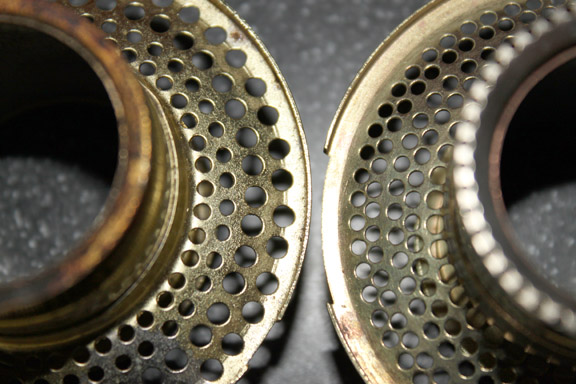
Aladdin Model C Brazil air diffuser left, model C Nashville air diffuser right.
The Model C Brazil air diffuser has 2 inner rows of smaller holes near the outer wick tube and 2 outside rows of larger diameter holes.
The model C Nashville air diffuser has five rows of the same diameter air holes. This is diagnostic if you stumble across a Model C Nashville outer wick tube/diffuser assembly that has the air baffle removed from the outer wick tube top.
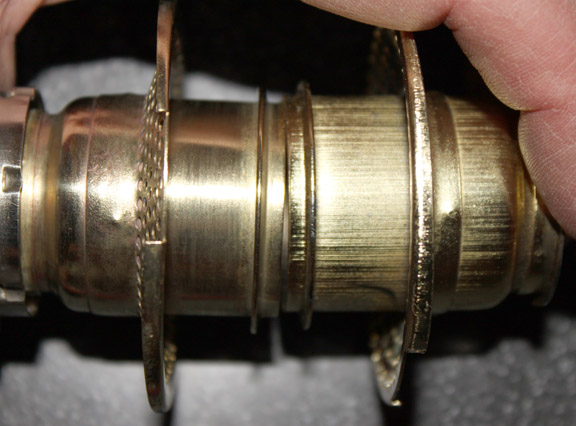
I was unable to find any dimensional differences between the Aladdin Nashville Model C outer wick tube and the Brazil model C outer wick tube. The top end part with the lip is also the same. The difference is in the air distributor around the outer wick tube and the air baffle crimped to the top of the Nashville burner.
|
![]()
![]() Contents > Aladdin Model C Brazil
Contents > Aladdin Model C Brazil



























